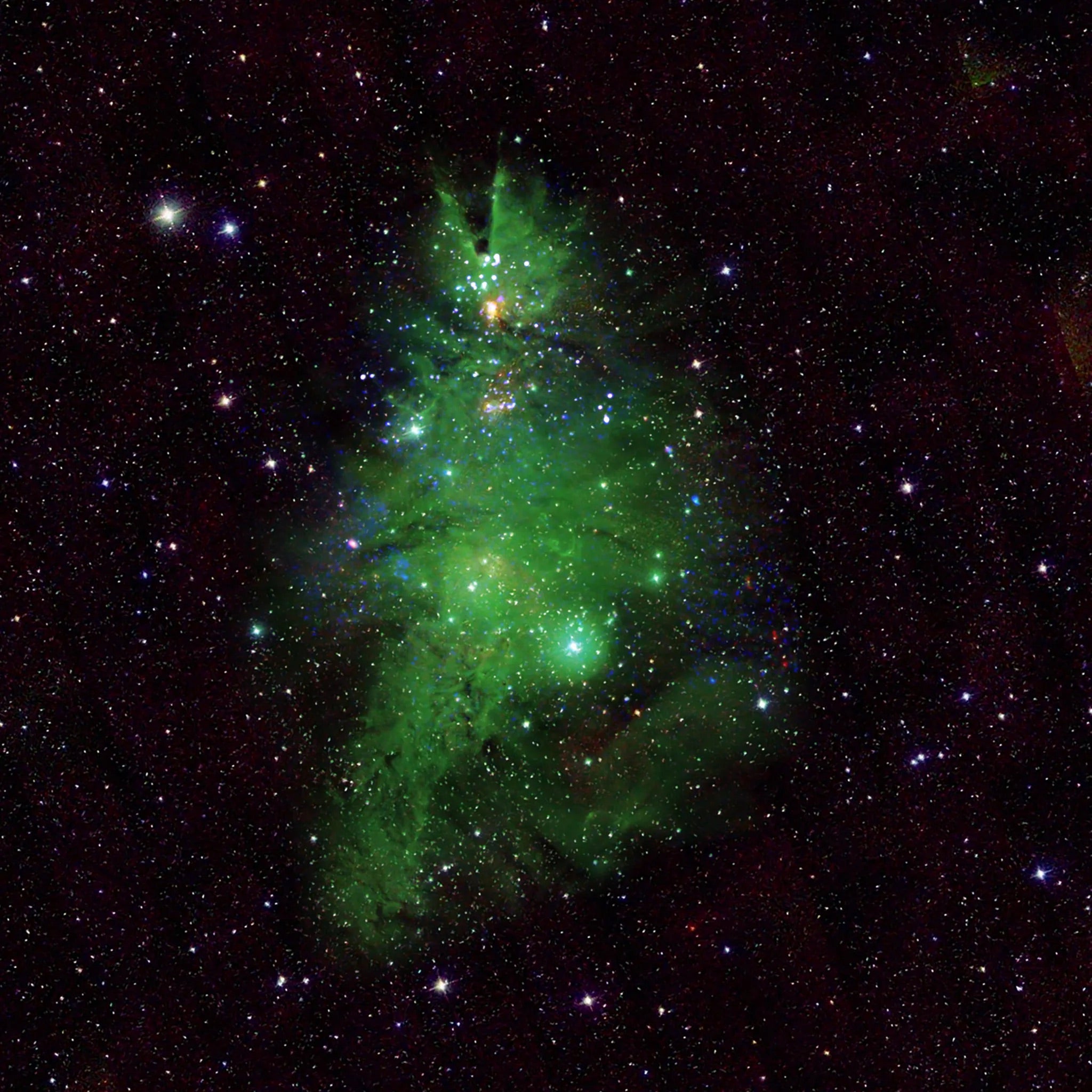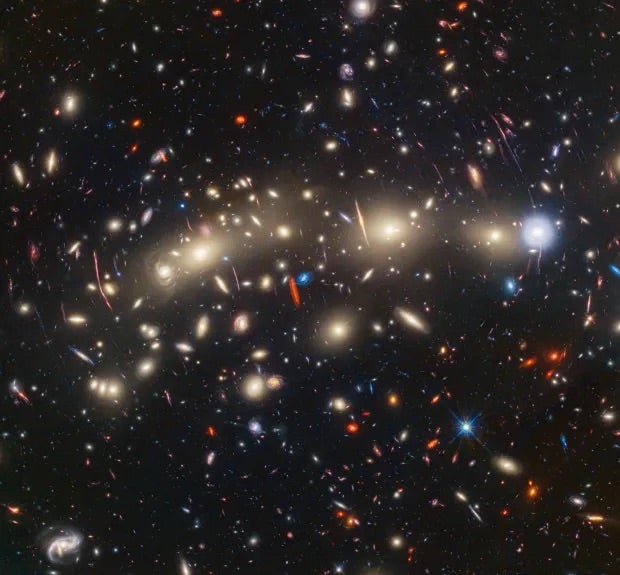
Have you ever seen comparison photos of objects on Earth versus objects in space, and found that there are some mind-boggling similarities? I’m talking about the ones that look almost identical. A fresh image of an open star cluster, cataloged as NGC 2264 and nicknamed the Christmas Tree Cluster, offers an appearance that helps us perfectly celebrate this December’s big holiday!
Through the collaboration of multiple observatories — and the magic of the cosmos — humanity has been gifted a vibrant image of NGC 2264 that amplifies several similarities to a lit-up Christmas tree.
Twinkling lights
The young star cluster is located in our Milky Way in the constellation Monoceros, lies 2,500 light-years away, and stretches 2¼ light-years across. It is a relatively young cluster with stars ranging anywhere between 1 and 5 million years old (by comparison, the Sun is halfway through its lifetime, currently about 4.6 billion years old). The masses of the stars in NGC 2264 vary greatly: some “weigh” less than a tenth of the Sun’s mass, and others outweigh the Sun by a factor of seven.
NASA posted a short animation and image on their website showing a new and colorful composite of the Christmas Tree Cluster. Optical data from the 0.9m WIYN Telescope on Kitt Peak displays the cluster’s associated emission nebula as pine-green needles that seem to fill up a Christmas tree — quite the opposite of Charlie Brown’s tree! Data from the Chandra X-ray Observatory provide dazzling blue and white lights, which appear mostly concentrated toward the top and middle sections of the tree. All the other foreground and background stellar “ornaments” were produced from Two Micron All Sky Survey infrared data.
A video produced with Chandra data shows some of the blue and white stars flickering, due to a number of processes. Similar to how the Sun creates solar flares and sunspots due to its magnetic field, so do these young stars, but with greater energies. Variations in the Christmas Tree Cluster also can arise because nebulosity varies in density. Material falling onto stars from surrounding circumstellar disks could also produce these twinkling lights. In addition to its diffuse cloud of emission nebulosity, NGC 2264 is associated with two famous nebulae, the Cone Nebula (a dark nebula at bottom center) and the Fox Fur Nebula (at lower right).
On a larger scale

But the Christmas Tree Cluster isn’t the only special cosmic object for this time of year. Through a marvelous union of the James Webb Space Telescope’s infrared data and the Hubble Space Telescope’s optical imagery, the cosmos gifted us a second festive image, this one showing an enormous galaxy cluster. The Christmas Tree Galaxy Cluster, cataloged as MACS 0416, lies 4.3 billion light-years away and is composed of two massive colliding galaxy clusters. At this distance, the photons we see tonight from this group began their journey about the same time as our solar system formed.
The Christmas Tree Galaxy Cluster earned its nickname from its multitude of colors as well as flickering lights. They can be observed as the cluster’s galaxies temporarily amplify background objects through gravitational lensing, says a new study’s lead author, Haojing Yan of the University of Missouri, in a press release. Gravitational lensing when the gravity of a massive object bends light from objects beyond.
In particular, researchers found 12 new transient objects (14 total) using the new Webb data after comparing four different epochs to look for “lights” that appeared and disappeared over the course of 126 days. Their study was published in The Astrophysical Journal this year. “We’re calling MACS0416 the Christmas Tree Galaxy Cluster, both because it’s so colorful and because of these flickering lights we find within it,” says Yan.
Do the cosmos mimic things here on Earth, or do we mimic the cosmos? Or maybe these things just comprise a funny coincidence? You can find other examples of these kinds of cosmic similarities. See what you can come across. But for now, happy holidays from both Astronomy magazine and the universe!









